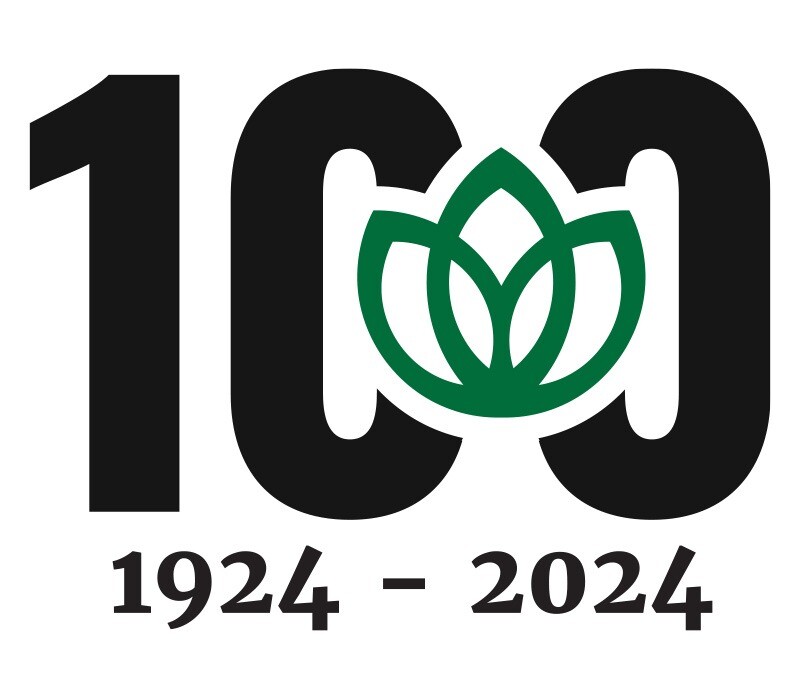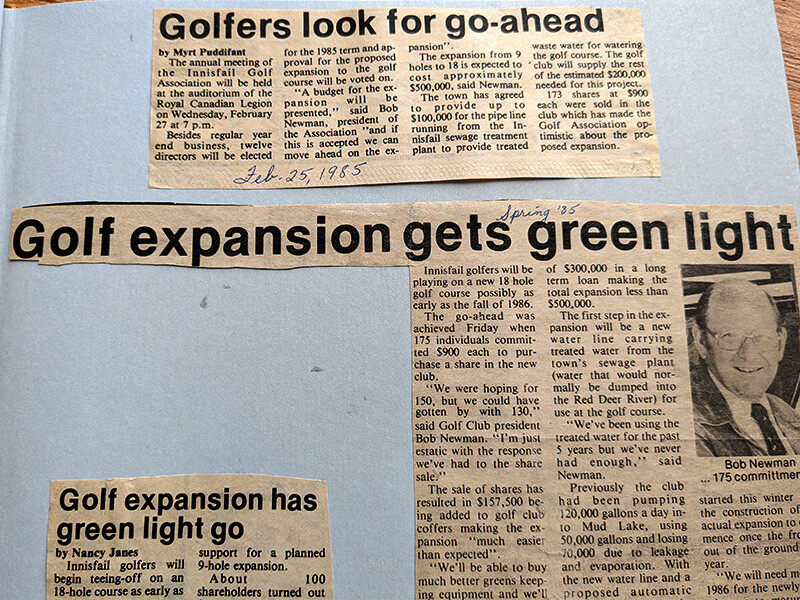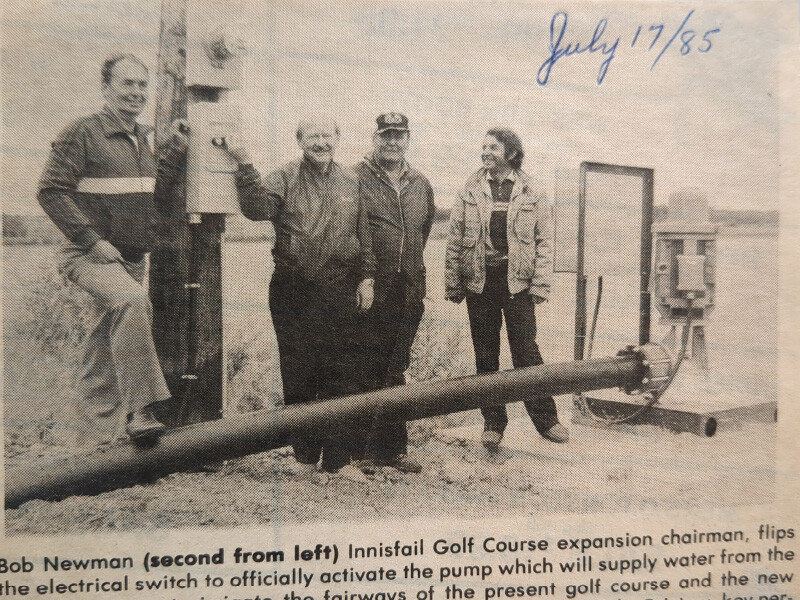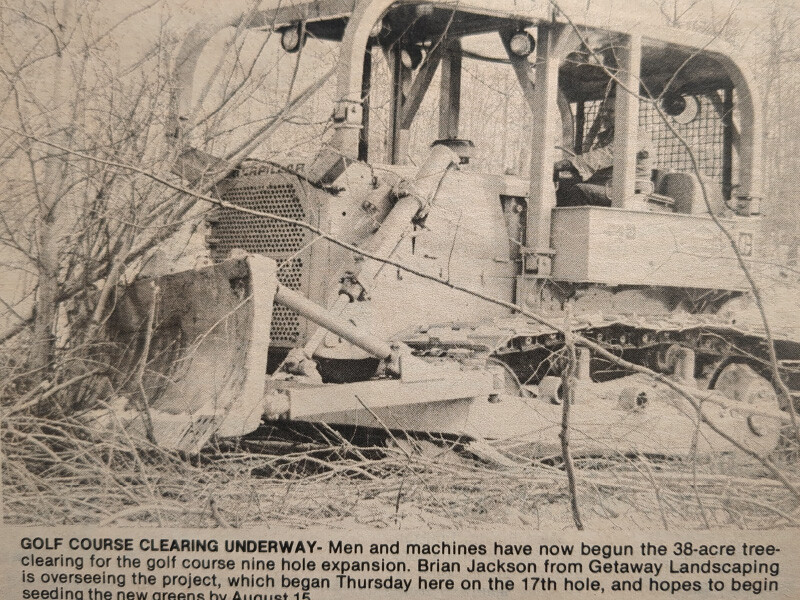The Greens are Grassy and Double or Nothing!
Compiled by Dianne Finstad
There are significant milestones in any history that’s got a hundred years to review. For the Innisfail Golf Club, it took vision, courage, determination, hands-on labour, plus financial commitments to see the Club through some ambitious expansion phases.
Even in those formative years, the Innisfail course was undergoing regular modifications and improvements, like land being cleared along the highway for what became Hole #1 (now the driving range).
Longtime member Joe Beardsworth remembers golf course maintenance was limited and required minimal equipment and staff in the early years, with Mr. Potter serving as the groundskeeper during much of the 1960s.
“He was a very friendly man often seen with a hand rolled cigarette in his mouth, while mowing the fairways or raking the greens,” says Beardsworth. “Major equipment consisted of an old grey Ford tractor (1940s vintage, possibly gifted by a local farmer). There was a mower and a utility wagon, which were pulled by the tractor. Other equipment included shovels, rakes, shears, and a lawnmower to trim the smaller spaces.”
The early sand greens provided their own challenges for finishing the hole, but as the game of golf became more popular and sophisticated in the region, the time came to take the course to the next level!
The big move came in 1967 when the first-ever greenskeeper, Joe Slomka, was hired by the course and the decision was made to move to grass greens. There were three converted and seeded to grass per year, finishing in 1971.
Grass needs water, and with the assistance of Shell and plant superintendent John Bristow, who donated aluminum pipe, the first irrigation system, with a portable pump was set up to enable hand watering of the greens. (More on water at IGC in an upcoming story!)
When they started to install the grass greens, Bristow’s sons, Doug and Ron, recall how John had his labour crew through the nearby Shell gas plant, Catalytics, come out to the course to supply labour for the dirt work and green building. But there was also a lot of volunteer help that made the work possible.
Thanks to the new grass and the community’s support, the Innisfail Club had a steady flow of golfers, members and visitors, as the popularity of the sport and the course grew. But that also increased the need for consistent maintenance. Volunteers often took their turns mowing fairways, after their regular jobs. They’d sit on the tractor mowing for several hours, and then play a few holes.
Golf carts were becoming quite the thing, with some members owning their own and storing them at the course. Longtime member Al Churchill remembers he was a 3-wheel Harley Davidson, with steering that looked like a tiller bar.
But another trend was for nearby courses in Central Alberta to add the extra nine holes.
The plan was always for the Innisfail course to also expand to the now accepted full range of 18 holes…but the question was ‘when?’. It was followed rapidly by ‘how?’ and ‘how much?’. Early shareholders recall the discussions got serious in the early 1980’s, as the big job of raising capital also began in earnest. Hand in hand with the expansion of the course was working out the details of a necessary watering system.
In 1982, after a watering system was in place and working, the decision was made by the Board of the day to conduct a feasibility study for the expansion. Golf course architect Bill Robinson was hired to create a master plan (a $6500 investment) By 1984, it was time for the rubber to meet the road and proposals were in place. The decision was made to issue shares to raise the funds, and any existing members between 1980-84 would be allowed to buy a share at $900.
The Alberta Treasury Branch manager at the time set it up so that anybody who wanted to buy a share, could buy it ‘on time’: $25/month payments, with no interest charges, through ATB. That was a major boost, especially considering interest rates in 1981 were over 20%!
There were 172 shares sold, while the expansion costs were estimated to be $540,000.
The project started small, with the creation of a 10th hole (now Hazelwood 1) with Derek Johnson given the task of completing it. This would open the door for a driving range.
It’s easy to look back now and see the expansion as a ‘slam-dunk’ step. But those were very uncertain times. Interest rates were edging down, but no one knew that for certain, so taking on a $500,000 mortgage in a 15-20% interest rate climate was a risky proposition. Debate over the project was often heated and spilled over from the golf course to Christmas parties and social gatherings.
There came a real ‘TSN Turning Point’ in the matter, thanks to a wise challenge at a member’s meeting, from one of the most senior members – senior as in age! Alan and Lise Rundell share the story of Rudy Dressler, Alan’s grandfather.
Upon retirement from a teaching career in Saskatchewan, Grandpa Rudy and Grandma Mabel debated moving to either Innisfail or Olds to be closer to family. They chose Innisfail based on the golf course. Innisfail Golf course was a 9-hole course at the time. Expansion plans were being discussed and a share structure was put in place to hopefully help fund the expansion. Grandpa Rudy bought share number 2 and was instrumental at a golf course shareholder meeting to put forward a vote for expansion to 18 holes. The vote was passed, and so it was that the course would expand to an 18-hole facility. (Share #2 from the course still is part of the family.)
To add a little extra color to the story, others recalled Rudy standing up after a heated discussion at the meeting on whether to spend the money on expansion. At 90 + years of age, he committed his $900, adding ‘I may not live to see it myself but you young people are crazy if you don’t follow through on this. It will be a boon for the community.’
It was one of those inspirational messages that turned the tide and the vote to go forward with the expansion was passed. With the Cornish Robinson firm commissioned to do the design for the 18 holes, the contract was awarded to Derek Johnson’s construction company. He used some local contractors to support the local economy for various aspects of the project. Glen Campbell did the shaping of the greens and tees, while local landscaper Brian Jackson did the finishing, seeding and final grading.
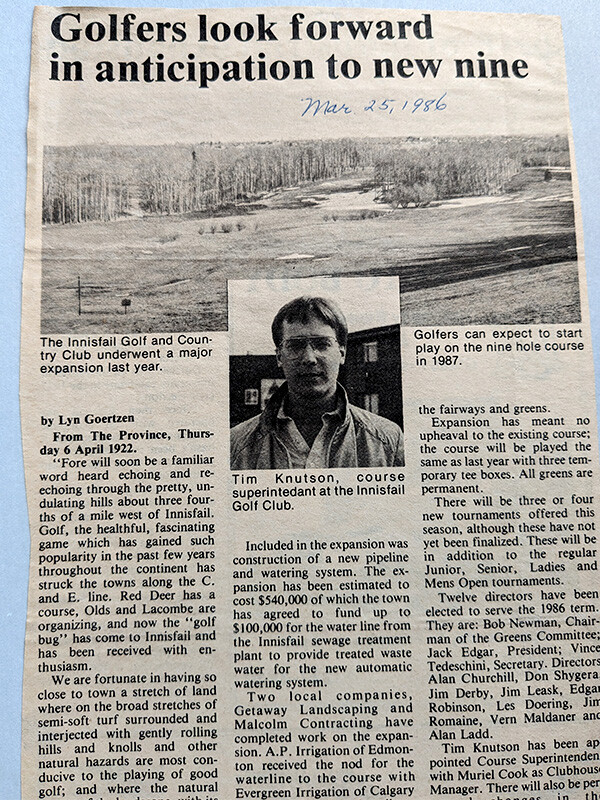
As you might imagine, it wasn’t all smooth sailing to get to that 18-hole milestone. Long-time General Manager Jim Romane said that once they started the expansion work, it became obvious they were not going to meet their budget. How to manage? Well, dedicated members volunteered to help keep the costs down, in countless ways. That included things like Edgar Robinson donating all the peat from his farm for the greens, and Ron Malcolm doing the dirt work for pretty much the cost of fuel, to mention just a few.
In the fall of 1986, the 18 holes officially opened. Legendary Rudy Dressler was even able to attend the grand opening (he practiced golf at IGC until the age of 98!) The growth of the popular spot was welcomed by all.
“It got busy right away,” says Al Churchill. “It went over very well. I don’t think anybody was disappointed a year or two down the road. It was a good decision to expand.”
There is a recurring theme throughout the last century, how time and again the passion for golf and the Innisfail Golf Club has been expressed in volunteer contributions, which have kept the Course surviving, ever green and growing through the challenges.
